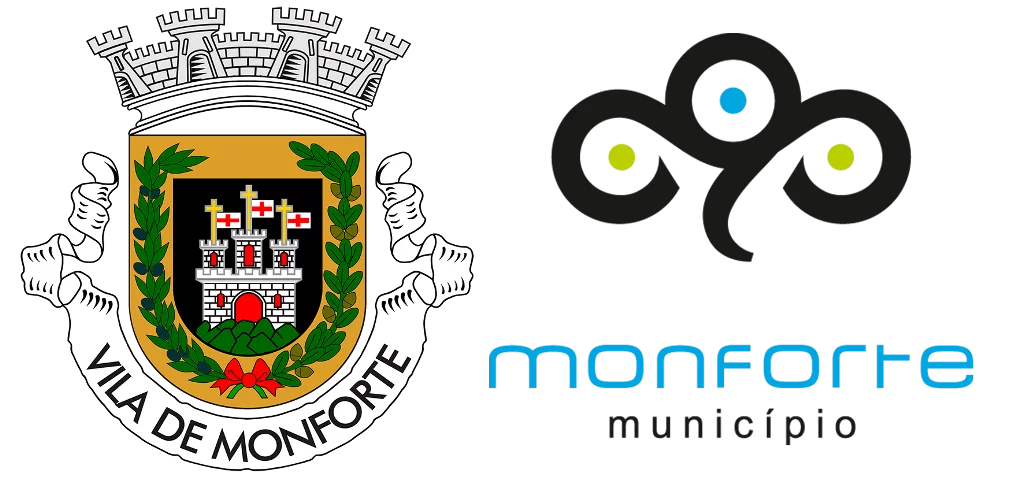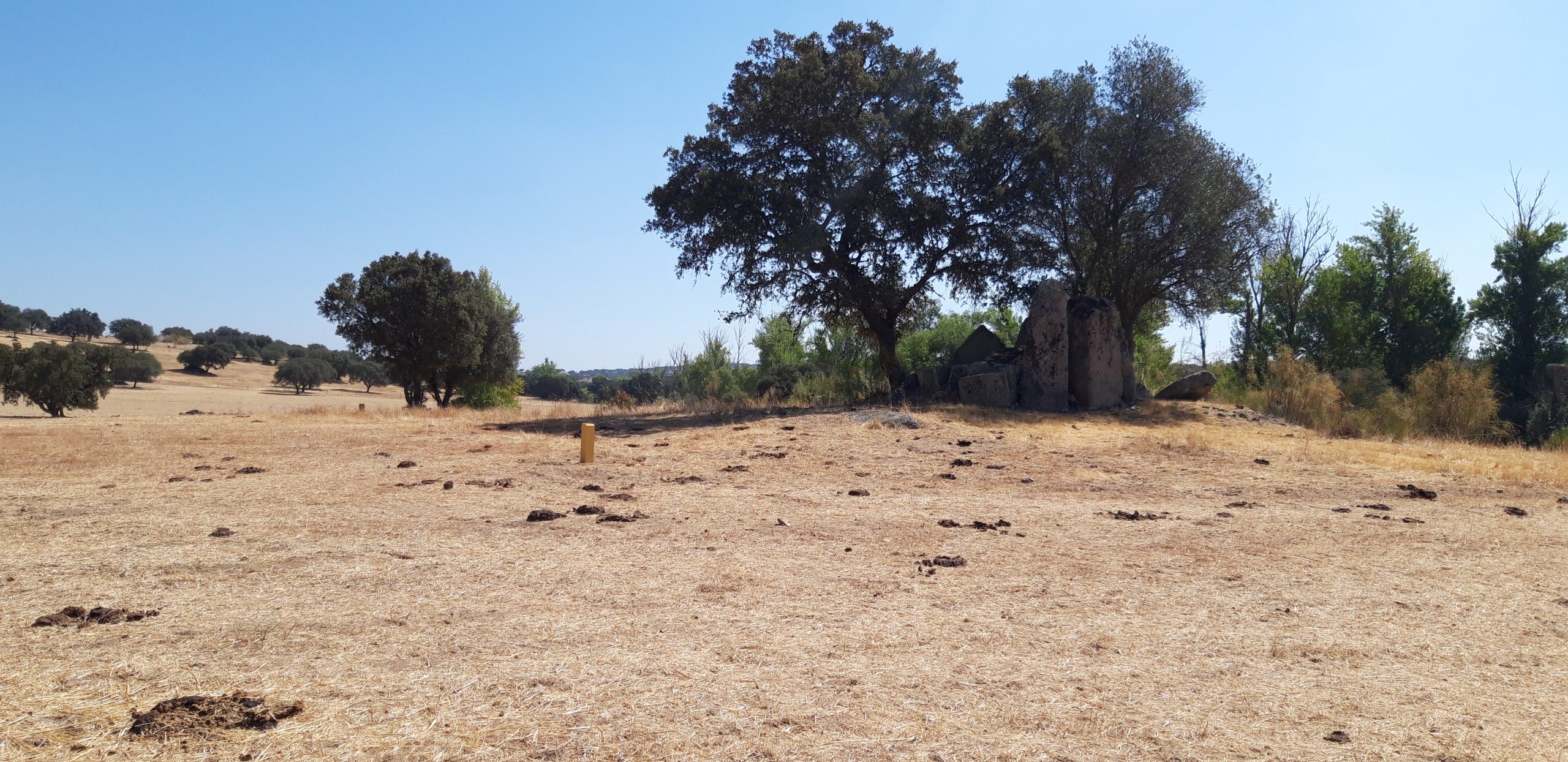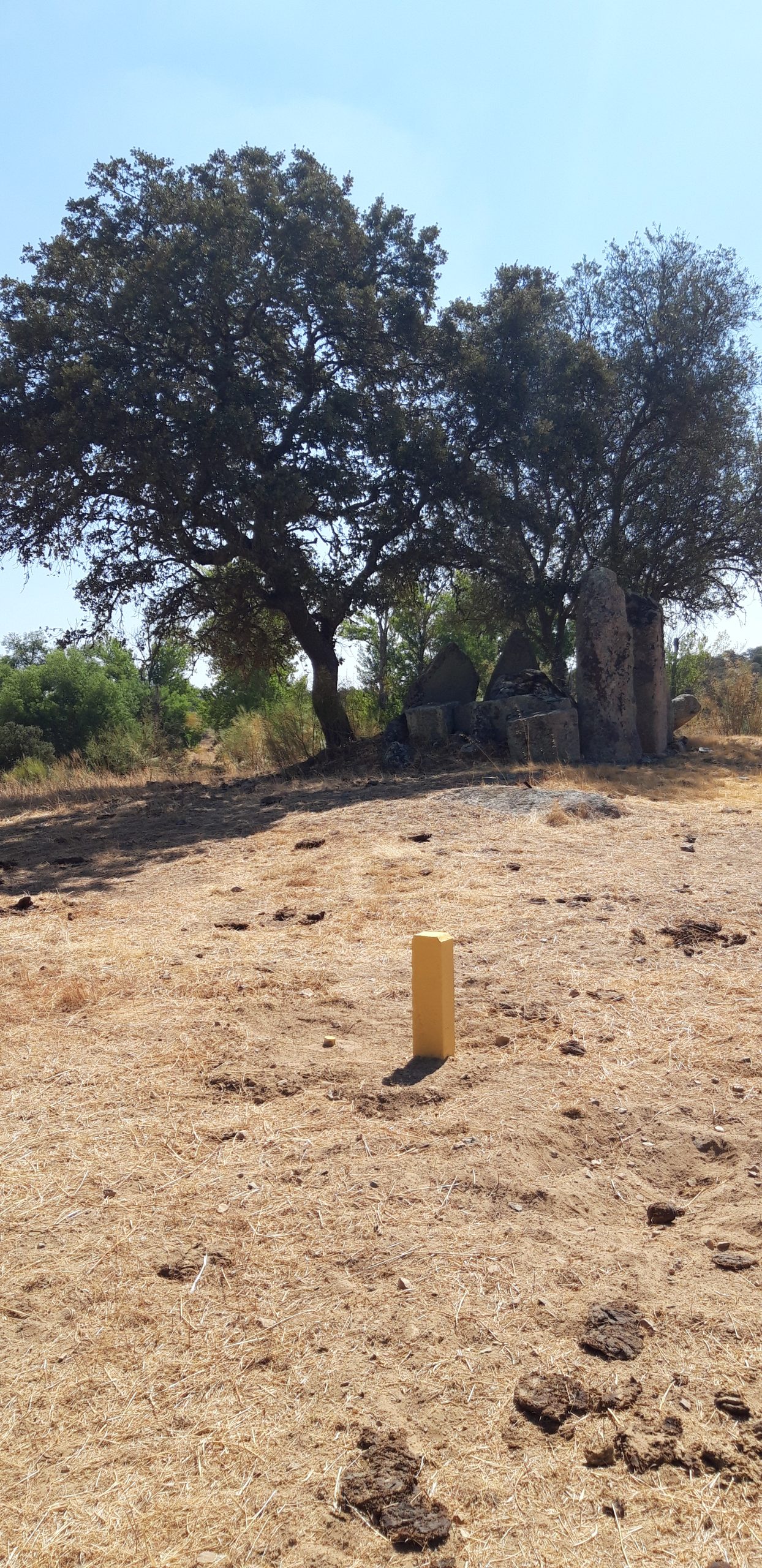Monforte
Antas de Rabuje
Free access
About
Antas de Rabuje
Part of Antas de Rabuje was first mentioned in the late 1920s by José Leite de Vasconcelos. This ensemble from the Neolithic / Chalcolithic (4th / 3rd millennium B.C.) is now composed of seven dolmens (Rabuje 1 to Rabuje 7) and a granite outcrop with rock art, namely a panel with “dimples“ (Rabuje 8).
These are funerary monuments, usually collective, built with large stones (cornerstones or orthostats) and composed of a funerary chamber covered with a large monolithic slab (hat), and could also have a corridor. All the dolmens were covered with an artificial, semi-circular mound made of earth and stone (tumulus), which protected them and made them stand out in the landscape.
Regarding the artistic expression known as “dimples”, in addition to appearing in the rock outcrop of Rabuje 8, it is also present in one of the supports of the chamber of Anta Grande de Rabuje (Rabuje 1). This type of representation is quite common in (but not exclusive of) the Megalithism of Alto Alentejo. Although their meaning is confirmed, they may be related to beliefs associated with death practices when located near (or in) elements of megalithic funerary or geographical landmarks signalling possible natural traffic routes when found in rock outcrops at specific points.
Rabujes
-
Anta de Rabuje 1
Coordinates 9º5'29.56"N / 7º24'52.40"O
-
Anta de Rabuje 2
Coordinates 39º5'36.19"N / 7º25'3.66"O
-
Anta de Rabuje 3
Coordinates 39º5'30.63"N / 7º25'13.87"O
-
Anta de Rabuje 4
Coordinates39º5'33.68"N / 7º25'13.18"O
-
Anta de Rabuje 5
Coordinates 39º5'35.00"N / 7º25'12.13"O
-
Anta de Rabuje 6
Coordinates 39º5'29.89"N / 7º24'54.19"O
-
Anta de Rabuje 7
Coordinates 39º5'25.20"N / 7º24'53.27"O
-
Anta de Rabuje 8
Coordinates 39º5'22.26"N / 7º24'44.53"O
Access
Prepare your visit
The archaeological site of Rabuje is located approximately 5 km North of the town of Monforte. It is part of a hiking trail called “das Antas de Rabuje”. You may get information from the Monforte Tourism Office (Phone: 245 578 060).
To visit the other archaeological sites (except Rabuje 1 and 6), we recommend that you contact the Archaeology Service of the Monforte City Council (Phone: 245578060) in advance to inform the landowners that you plan to visit. This must be done because you need to cross fenced grounds and, therefore, gates and barriers. Access to this ensemble of archaeological sites is facilitated by the owners of the land where it is located. Keep that in mind when you visit the site, respecting it and contributing to its cleanliness, maintenance, and preservation.
Reduced mobility
Visitors with reduced mobility (wheelchairs, baby strollers) can access Rabuje 1 and Rabuje 6.
Guided tours
Guided tours of the ensemble are possible. They must be booked in advance and depend on technical availability for the required date. Contact the Archaeology Service of the Monforte City Council (Phone: 245578060).
Support

RESEARCH
Bibliography & useful links
BOAVENTURA, Rui (2000). A geologia das Antas de Rabuje (Monforte, Alentejo). In Revista Portuguesa de Arqueologia, vol. 3, nº 2. Instituto Português de Arqueologia, Lisboa, pp. 15-23. Disponível em: Consultar Artigo Completo → [Consultado a 22/06/2023].
BOAVENTURA, Rui (2006). Os IV e III milénios a.n.e. na região de Monforte, para além dos mapas com pontos: os casos do cluster de Rabuje e do povoado com fossos de Moreiros 2. In Revista Portuguesa de Arqueologia, vol. 9, nº 2. Instituto Português de Arqueologia, Lisboa, pp. 61-73. Disponível em: Consultar Artigo Completo → [Consultado a 22/06/2023].
MATALOTO, Rui; ANDRADE, Marco António; PEREIRA, André (2016/2017). O Megalitismo das pequenas antas: novos dados para um velho problema. In Estudos Arqueológicos de Oeiras, vol 23, Câmara Municipal de Oeiras, Oeiras, pp. 33-156. Disponível em: Consultar Artigo Completo → [Consultado a 22/06/2023].
NETO, Maria Cristina Santos (1997). Notícias inéditas sobre dólmens em Portugal. In Setúbal Arqueológica, vol. 23, Museu de Arqueologia e Etnografia do Distrito de Setúbal, Setúbal, pp. 99-107. Disponível em: Consultar Artigo Completo → [Consultado a 22/06/2023].
VASCONCELOS, José de Leite de (1929). Antiguidades do Alentejo. In O Archeologo Português, Série I, 28, p. 158-200. Disponível em: Consultar Artigo Completo → [Consultado a 23/06/2023].
https://arqueologia.patrimoniocultural.pt/index.php?sid=sitios&subsid=54892
https://arqueologia.patrimoniocultural.pt/index.php?sid=sitios&subsid=52825
https://arqueologia.patrimoniocultural.pt/index.php?sid=sitios&subsid=52826
https://arqueologia.patrimoniocultural.pt/index.php?sid=sitios&subsid=54894
https://arqueologia.patrimoniocultural.pt/index.php?sid=sitios&subsid=57595
https://arqueologia.patrimoniocultural.pt/index.php?sid=sitios&subsid=2128395
https://arqueologia.patrimoniocultural.pt/index.php?sid=sitios&subsid=179181
https://arqueologia.patrimoniocultural.pt/index.php?sid=sitios&subsid=2128412
https://issuu.com/infoportugal/docs/guia_transalentejo_alto_alentejo/s/11640665
https://feelnature.cimaa.pt/os-percursos/percurso/mft-pr2-rota-das-antas-da-rabuje

